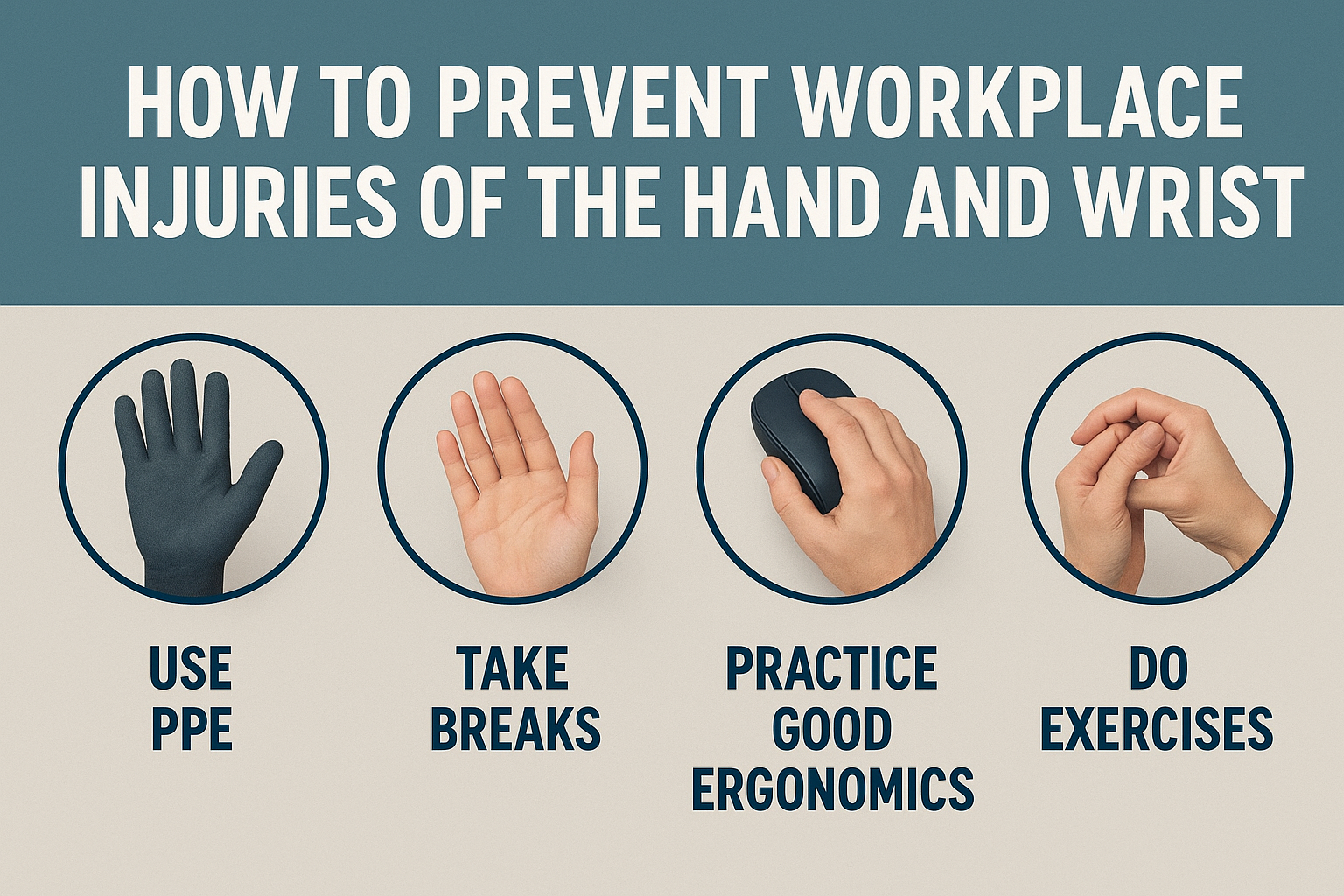Workplace safety is a priority for every employee and employer. The hand and wrist are among the most vulnerable parts of the body since they are used constantly for manual tasks, typing, lifting, and operating machinery. A minor strain or cut can affect productivity, while severe injuries may require long rehabilitation. Preventing these issues is possible with awareness, protective practices, and timely medical guidance.
Common Causes of Hand and Wrist Injuries at Work
Repetitive motions like typing, assembly line work, or tool use.
Overuse injuries such as tendinitis and carpal tunnel syndrome.
Accidental cuts, crush injuries, or fractures from machines.
Poor ergonomics and lack of rest breaks.
Identifying risk factors is the first step in preventing workplace accidents involving the upper limb.
Ergonomic Practices to Reduce Risk
Setting up an ergonomic workstation plays a vital role in avoiding strain. Employees should:
Maintain neutral wrist posture while typing.
Adjust chair and desk height for proper alignment.
Use ergonomic keyboards, mouse, and wrist supports.
Take short breaks to stretch fingers and wrists.
Good ergonomics minimizes unnecessary pressure on joints and soft tissues.
Protective Gear and Safety Measures
Using personal protective equipment is essential in industries involving heavy machinery, sharp tools, or chemicals. Examples include:
Cut-resistant gloves for construction and manufacturing.
Wrist guards for repetitive vibration tools.
Non-slip grips to prevent accidental slips.
Training employees on correct handling techniques reduces the likelihood of traumatic injuries.
Importance of Early Detection and Medical Guidance
Recognizing symptoms like wrist pain, numbness, tingling, or reduced grip strength at an early stage prevents progression into chronic conditions. Workers should report problems immediately and undergo proper medical evaluation. Early treatment supports faster recovery and helps avoid long-term disability.
Exercises and Stretching for Hand Health
Simple daily hand exercises can maintain flexibility and strength:
Wrist circles and gentle stretches.
Finger stretches and grip strengthening.
Forearm rotations to ease tension.
Incorporating these routines into the workday enhances endurance and lowers the risk of injury.
Employer’s Role in Prevention
Organizations must provide training sessions, safe tools, and regular assessments to reduce the risk of occupational injuries. Implementing safety policies and fostering a culture of wellness protects employees and improves productivity.
Conclusion
Preventing hand and wrist injuries at the workplace requires a balance of ergonomic practices, protective gear, and early intervention. Employees should prioritize safety while employers must create a secure environment.
For specialized guidance and treatment, consult our Dr Harish Kattamudi, an expert in sports medicine and orthopedic care.
Taking proactive steps today ensures a healthier, safer, and more productive workplace for everyone.

